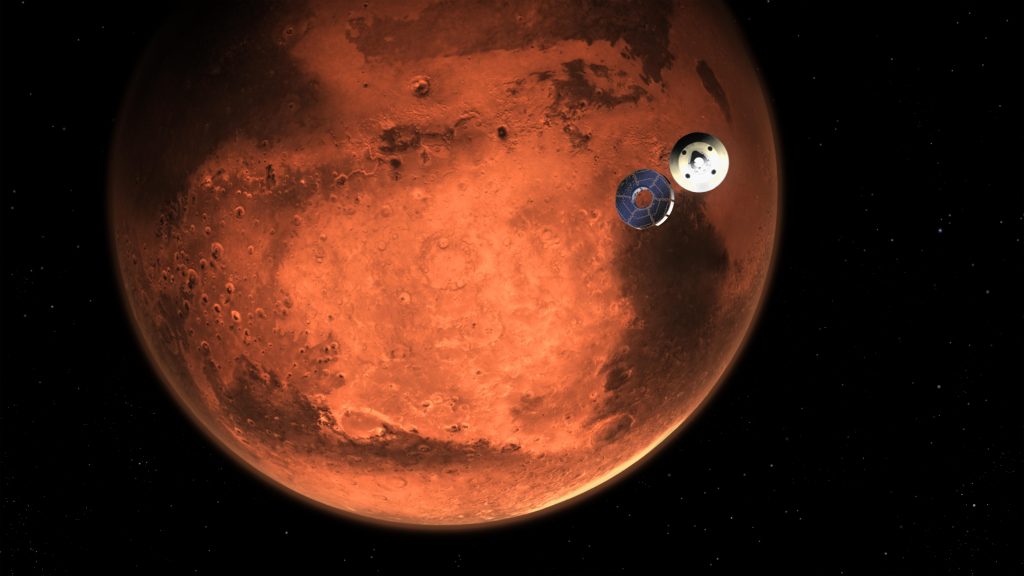
Live coverage of NASA’s Mars 2020 Perseverance rover landing is about to start on NASA TV and YouTube. More information about how to watch these streams, which include a 360-degree view from inside mission control, is on the mission’s watch online page. Share photos of you and your loved ones watching landing with the hashtag #CountdownToMars.
In the next several minutes, mission controllers are expected to turn off the transmitter sending commands to the spacecraft. At that time, they will have effectively taken their hands “off the wheel,” leaving Perseverance to complete the programmed landing sequence on its own. The spacecraft is expected to hit the top of the Martian atmosphere at around 3:48 p.m. EST (12:48 p.m. PST) and touch down at around 3:55 p.m. EST (12:55 p.m. PST). Perseverance will land with NASA’s Ingenuity Mars Helicopter attached to its belly.
Two NASA Mars orbiters will relay data on the Perseverance Mars rover landing back to Earth – the Mars Reconnaissance Orbiter (MRO) and the Mars Atmosphere and Volatile EvolutioN (MAVEN) spacecraft. They are part of the Mars Relay Network.
MRO is expected to relay detailed Perseverance engineering data to Earth in near-real-time. MAVEN will also be flying over Perseverance’s landing site around the same time, recording the same data as MRO. MAVEN, however, will only be able to transmit its data hours after the rover lands. Both orbiters send data back through the antennas of NASA’s Deep Space Network (DSN).
Since the rover has preprogrammed landing instructions and significant autonomy, Perseverance can land safely on Mars without a communications link. There are additional scheduled playbacks of the data from MRO and MAVEN, as well as additional orbiter overflights, after landing, that can relay signals from the rover.
The latest spacecraft news can be found on the mission update page.
